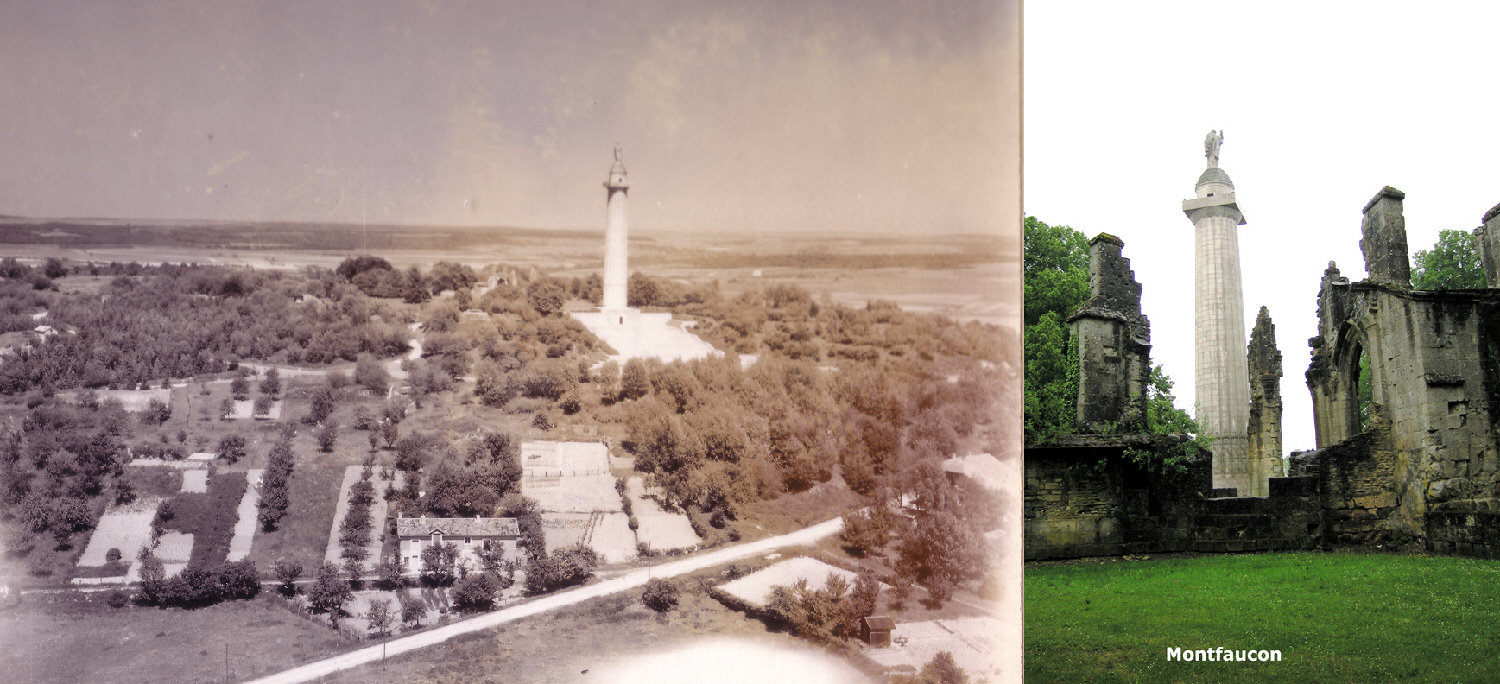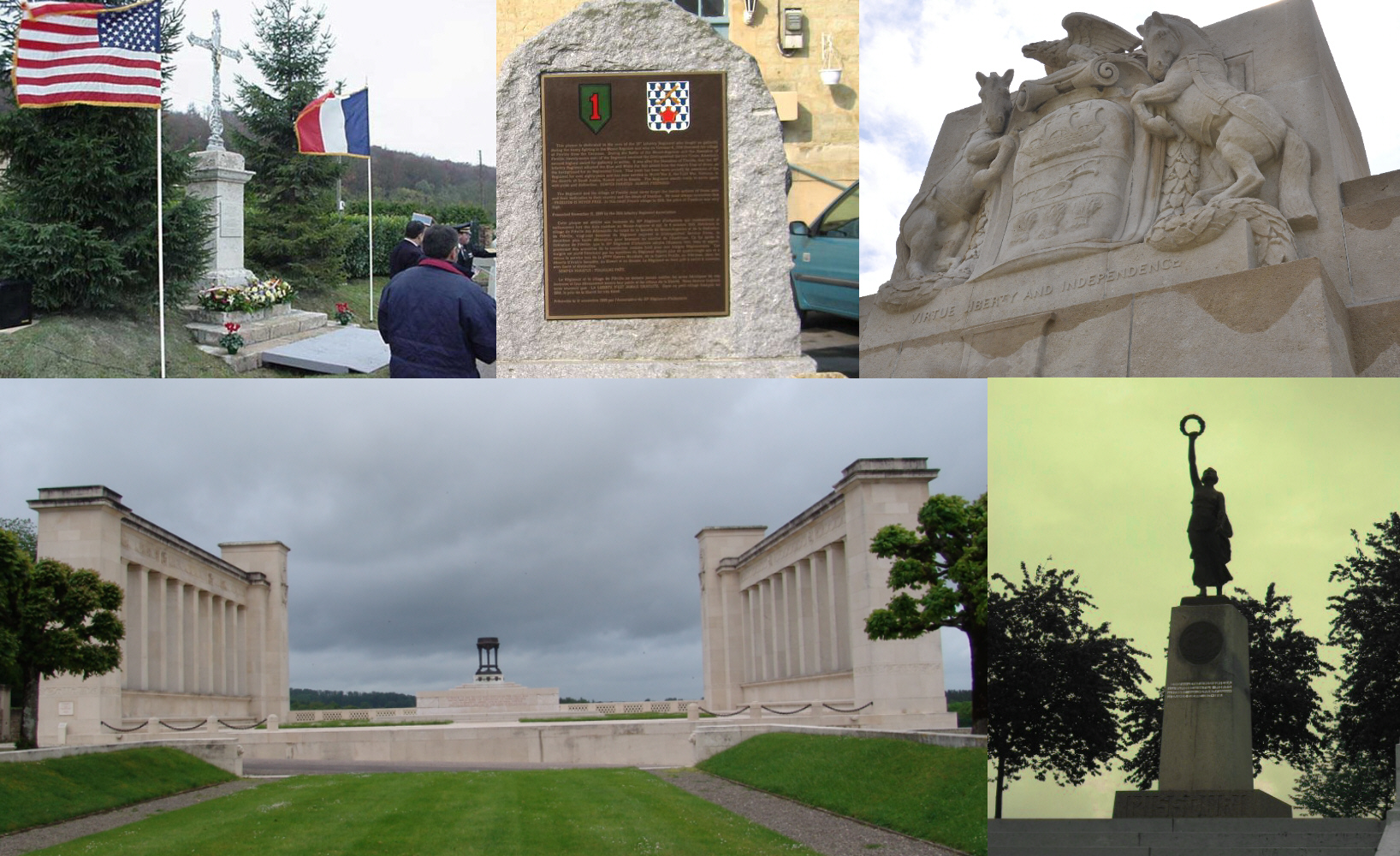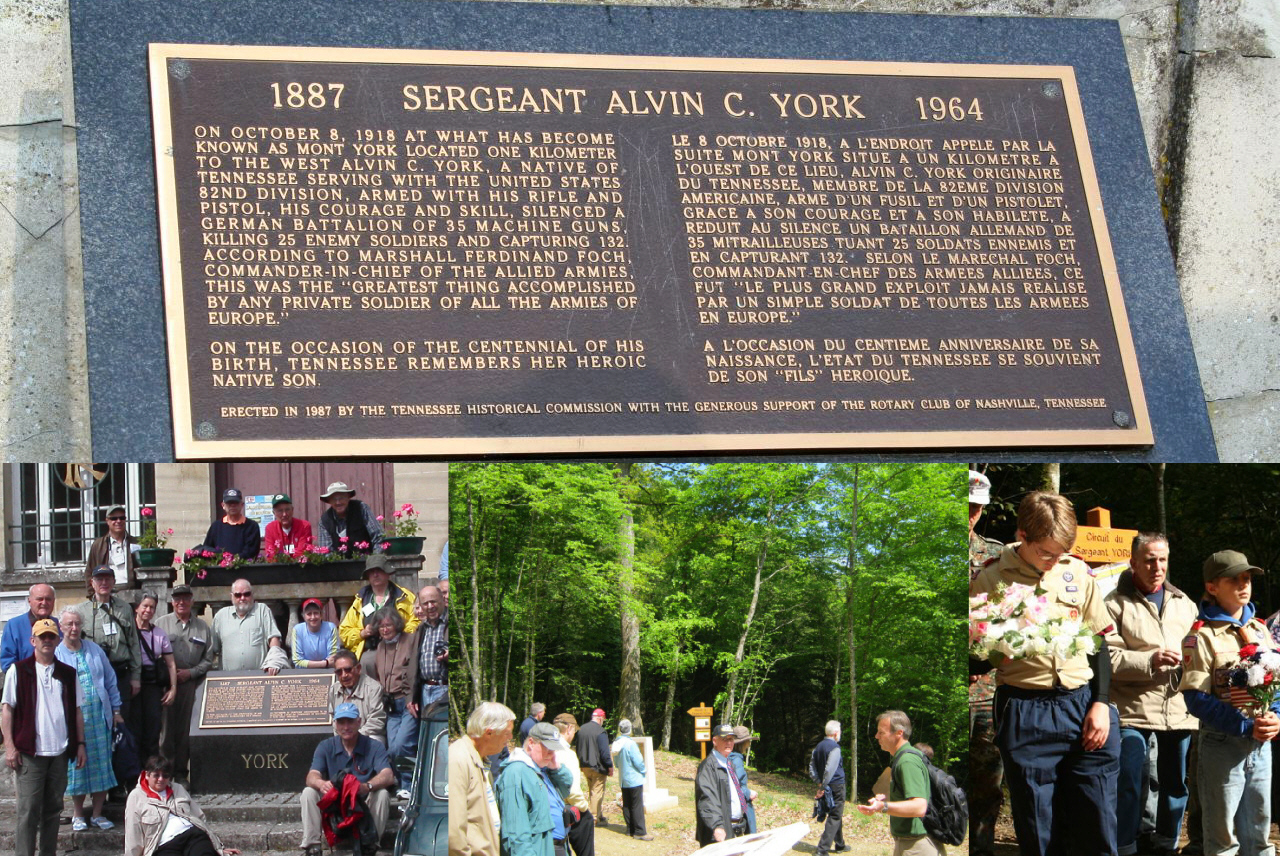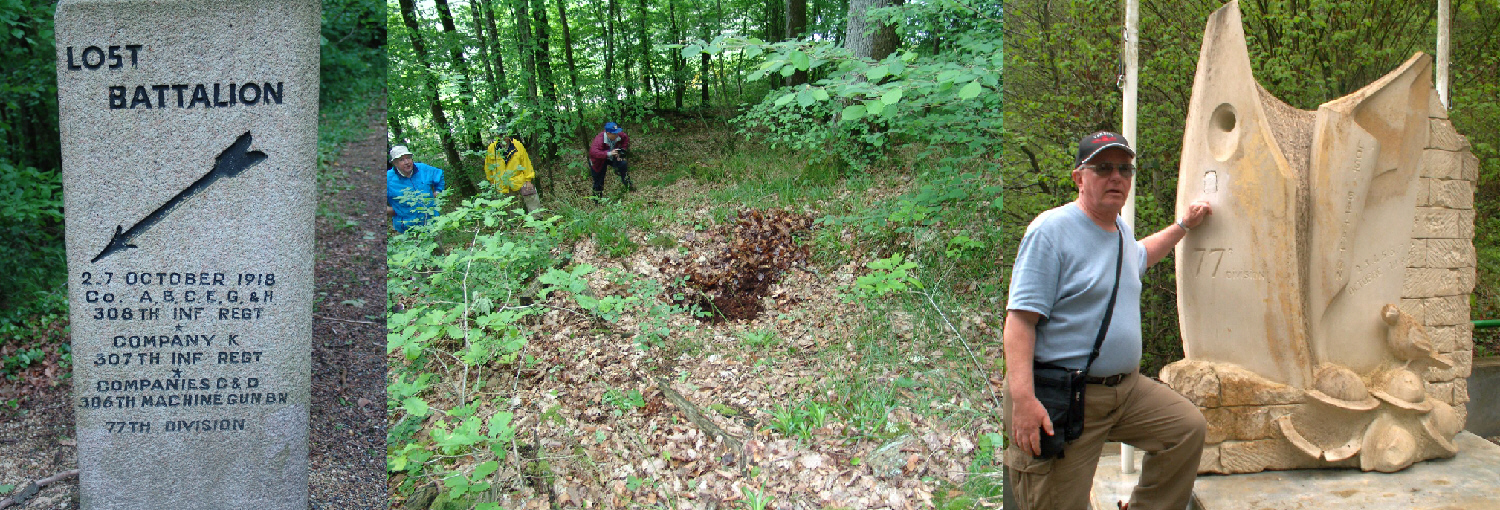Yesterday, we presented a review of the Meuse-Argonne Offensive as it was fought in 1918. Since it was America's largest battlefield in the war, every effort was made afterward to honor the effort and sacrifice of the participants. Here are the major memorials and a selection of the unit, state, and individual memorials that can be found there today.
Click on Image to Expand
Montfaucon (Mount Falcon) was the most important opening objective of the operation and is, today, the location of the national memorial to the battle. It consists of a massive granite Doric column, surmounted by a statue symbolic of Miss Liberty, which towers more than 200-feet above the war ruins of the former village and an abbey. The observation platform on top of the memorial affords magnificent views of the battlefield. The photo on the left, taken from a B-17 shortly after VE-Day in 1945, shows why the position was so important. It gave the German defenders a 360-degree view of the surrounding countryside. Behind Montfaucon can be seen the open country that would have allowed the U.S. assault a rapid advance had the hill been taken quickly. Montfaucon, however, was held through the second day, allowing reinforcements to be called in to slow the American advance.
Click on Image to Expand
A number of monuments are concentrated in the early zone of the American advance. From the top left: the Lt. Frank (Balloon Buster) Luke memorial near Murvaux, just east of the Meuse, where he crashed and had his fatal gun battle with German soldiers; a plaque honoring the 16th Infantry, 1st Division, at Fleville; the 80th Division Monument at Nantillois. Below: the enormous Pennsylvania Monument at Varennes; and the nearby Missouri State Monument.
Click on Image to Expand
Chatel-Chéhéry in the Argonne Forest was the location of one of two great legends of the battle: Alvin York's Medal of Honor feat on 8 October 1918. The town hall is the site of the main commemorative plaque. To the north of the village is the new commemorative trail that follows York's activities that day. The Boy Scouts photographed at the trail's dedication are sons of American military stationed in Europe, who volunteered to help restore the trail.
Click on Image to Expand
Nearby, at Charlevaux Mill, is the site of the Lost Battalion incident of early October 1918. The actual site (one of the rifle pits is shown in the middle) has become more difficult to access in recent years but can be viewed from the distance near the new roadside monument (right image) dedicated on the 90th anniversary of the event.
Click on Image to Expand
There are fewer markers commemorating the last stage of the battle, since it involved a very rapid advance. On the left side above is a view of Sedan taken from the hill near Pont Magus, which was the farthest northern point of advance for the offensive. Below is a view of the River Meuse, site the last attack of the war. The first has no U.S. commemorations. A small 2nd Division marker on the Meuse indicates the crossing point, while small divisional and corps markers can found on the ridge above, marking the extent of the advance by the Armistice. On the right are shown two memorials close to the farthest easternmost point of the American advance: top is the new monument to Henry Gunther of Baltimore, Maryland, and the 79th Division, who was the last man killed in action during the Great War; and below is an impressive tower above the village of Sivry honoring the 318th Infantry of the 80th Division.
Click on Image to Expand
The military cemetery at Romagne is the nation's largest in Europe. It covers 130.5 acres and has a total of 14,246 burials. The cemetery lies adjacent to last level of the Hindenburg Line, the German Army's main defensive position in 1918. The left image is an aerial view in which the shield-like shape of the cemetery can be discerned. The right view from the visitor's center toward the chapel and memorial complex. Panels on either side of the chapel contain the "Tablets of the Missing" with 954 names, including those from the U.S. expedition to northern Russia in 1918–1919.
Sources: Steve Miller, ABMC publications, and American War Memorials Overseas







Great series of posts and pictures! I have been lucky enough to have visted this area twice; it is very pleasent with the gently rolling holls, small towns and villages, and good roads. Unfortunately, you rarely run into Americans; this battle, like much of WWI in general, has just about faded from the national memory. I hope with the resurgance of intrest caused by the centinial that more visitors go and see these places. I know I am going again next year.
ReplyDeleteWould like to visit Romagne some day. My great uncle, Robert Toler is buried there. He was killed October 10th, 1918 by German artillery fire.
ReplyDelete318th Inf. didn't serve w/ the 79th Div.
ReplyDeleteGood catch. It was the 80th Division. Correction made. Thanks for keeping us on our toes.
DeleteI am making a Family History book, and the grandfather of my in-law was in the 308th, wounded on the 2nd October. I would like to show him just where the site was.
ReplyDeleteCould you show/describe exactly where the site of the Lost Battalion incident is, if one used the following URL for Google map - street view?
https://www.google.com/maps/@49.250807,4.906336,3a,75y,123.45h,82.09t/data=!3m6!1e1!3m4!1s7wYjRX1vQoplz4aoWU0uAw!2e0!7i13312!8i6656
May I also use your photo of the sign for the Lost Battalion? I always use credit/captions lilke: "Photo courtesy of..."
Thank you for any help.
Mary Van Dyke
Hi Mary,
DeleteOn that street view look a the hill straight ahead, before the road bends to the left and on the other side of the pond. That slope is where they were trapped.